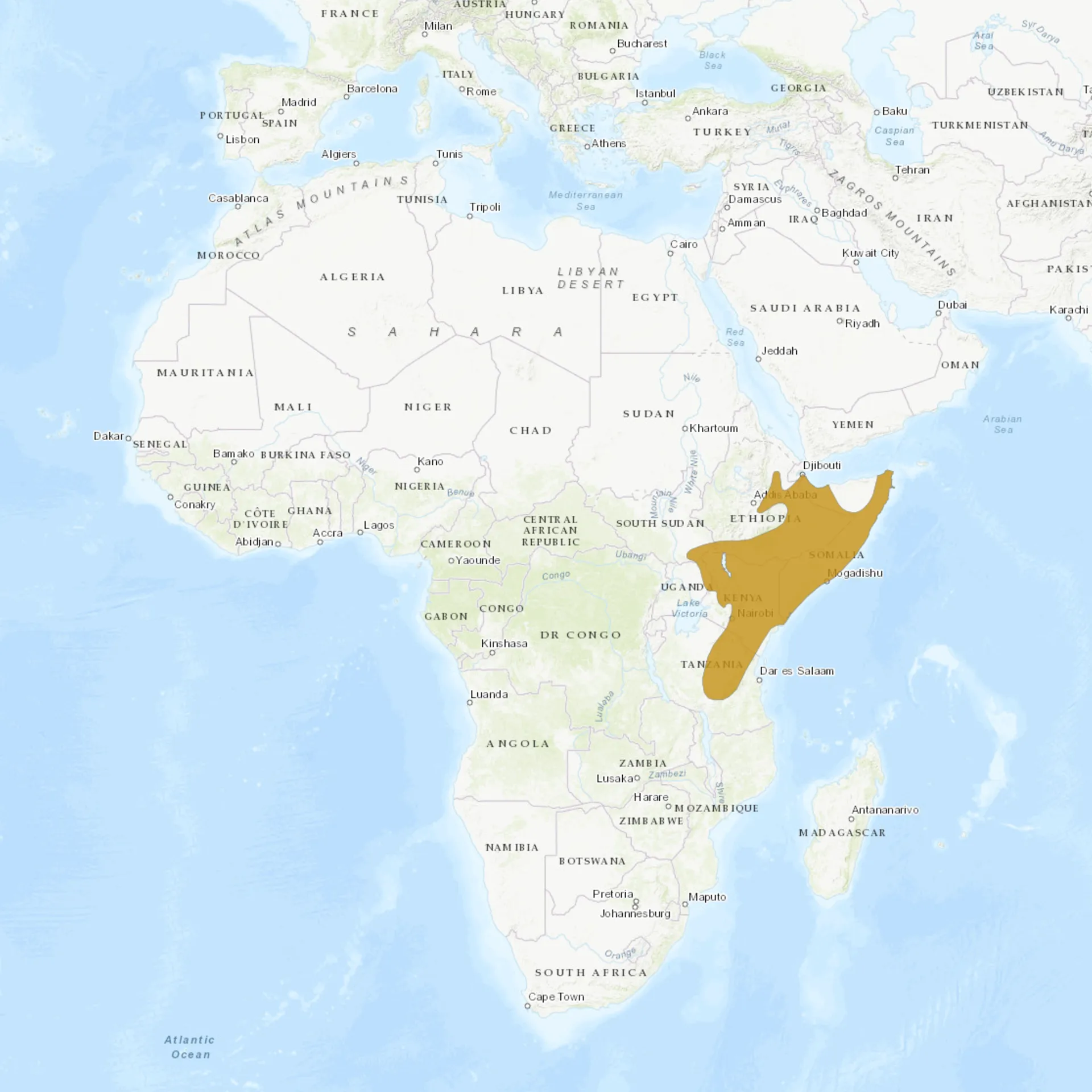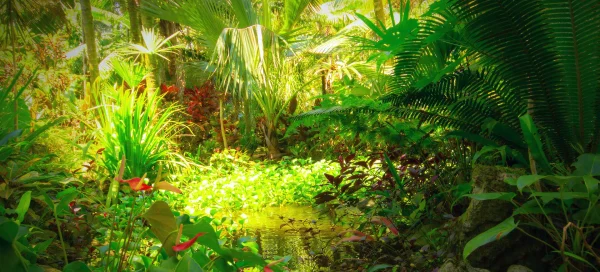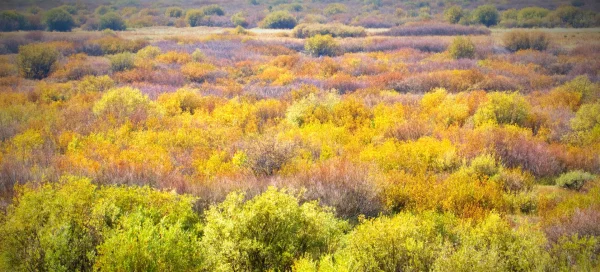Overview
The buff-crested bustard (Lophotis gindiana) is a medium-sized terrestrial bird native to the arid and semi-arid regions of East Africa. It belongs to the Otididae family, which includes other bustards known for their cryptic plumage and ground-dwelling behavior. This species is characterized by its distinctive buff-colored crest, which can be raised or lowered depending on its level of alertness. Primarily solitary or found in small groups, it relies on its excellent camouflage and quick bursts of flight to evade predators.
Buff-crested bustards are most active during the early morning and late afternoon, resting or foraging in shaded areas for the rest of the day. Their diet consists mainly of insects, seeds, and plant material, which they peck from the ground while moving cautiously through their habitat. They are known for their elaborate courtship displays, during which males puff up their throats, fan their tails, and perform dramatic leaps. These displays play a crucial role in mate selection and are often accompanied by distinctive calls.
Well-adapted to dry environments, buff-crested bustards can survive with minimal water intake by extracting moisture from their food. Their cryptic coloration helps them blend seamlessly into the dry grasslands and scrublands they inhabit. When threatened, they prefer to remain motionless or crouch low before suddenly escaping by running or flying in short bursts. While they are not currently considered at risk, habitat degradation poses a potential threat to their long-term population stability.
Taxonomy
Kingdom
Phylum
Class
Order
Family
Genus
Species
Type
Current distribution:
The buff-crested bustard is found in several East African countries, including Ethiopia, Somalia, Kenya, Uganda, and Tanzania. Its range primarily extends through relatively abundant semi-arid and dry savanna regions. The species' ability to survive in harsh environments with minimal water has allowed it to persist in areas where other birds may struggle. While it is not migratory, it may move locally in response to seasonal food and water availability changes.
Despite its wide distribution, habitat degradation due to human activities such as agriculture and overgrazing poses a potential threat. Increasing land use for livestock farming has reduced suitable foraging areas in some regions. However, it is still considered a common species in most of its range and does not currently face significant population declines. Conservation efforts focused on preserving dryland habitat could help maintain stable populations.
Physical Description:
The buff-crested bustard is a slender bird with a compact body, long legs, and a relatively small head. Its crest is buff-colored and can be raised when alarmed or during courtship displays. The bird’s plumage is primarily brown and buff, with intricate patterns that provide effective camouflage against dry grasslands and scrub habitats. Males and females are similar in appearance, though males are slightly larger and have more pronounced markings.
The broad and rounded wings feature a mix of brown, black, and white feathers that become visible in flight. The underparts are paler, often displaying a buff or whitish coloration with fine barring. Its eyes are large and positioned for excellent lateral vision, allowing it to detect predators from a distance. The beak is short and slightly curved, suited for picking insects and plant material from the ground.

Lifespan: Wild: ~15 Years || Captivity: ~20 Years

Weight: Male: 1.1–2.2 lbs (0.5–1 kg) || Female: 0.9–1.8 lbs (0.4–0.8 kg)

Length: Male: 16–20 in (40–50 cm) || Female: 15–19 in (38–48 cm)

Wingspan: Male & Female: 27–34 in (68–86 cm)

Top Speed: 37 mph (60 km/h)
Characteristic:
Native Habitat:
The buff-crested bustard inhabits dry savannas, grasslands, and scrublands across East Africa. It prefers open landscapes with scattered shrubs and trees, where it can forage on the ground while remaining hidden from predators. These birds are well-adapted to arid environments and can survive in areas with limited water availability. They are most commonly found in regions with sandy or rocky soil, where their cryptic coloration provides effective camouflage.
This species is particularly associated with acacia woodlands and thorny bushlands, where it benefits from the cover provided by low vegetation. It avoids dense forests and wetlands, preferring semi-open habitats where it can detect approaching threats. Due to its ground-dwelling nature, it is sensitive to habitat changes caused by overgrazing, land clearing, and human encroachment. However, it remains widespread and adaptable to various dryland ecosystems.
Climate Zones:
Biomes:
Biogeographical Realms:
Continents:
Diet:
Diet & Feeding Habits:
The buff-crested bustard is an omnivorous bird that primarily feeds on insects, seeds, and plant matter. Its diet includes grasshoppers, beetles, ants, and other invertebrates, which provide essential protein. It also consumes various seeds, leaves, and shoots, especially when insects are scarce. This dietary flexibility allows it to thrive in arid environments with fluctuating food availability.
Foraging is primarily done by walking slowly through grasslands while pecking at the ground to capture prey or pick up seeds. It often forages alone or in small groups, relying on its keen eyesight to detect movement. Since it lives in dry habitats, it obtains most of its water from food, reducing its dependence on standing water sources. During breeding, males may become more territorial over feeding areas to attract potential mates.
Mating Behavior:
Mating Description:
Buff-crested bustards have a polygynous mating system in which males court multiple females through elaborate displays. During courtship, males inflate their throats, extend their wings, and leap into the air while producing a series of vocal calls. These displays serve to attract females and establish dominance over rival males. Mating occurs seasonally, often timed with the onset of rains to ensure food availability for offspring.
After mating, females are responsible for nest building, incubation, and chick rearing. They lay their eggs in a shallow scrape on the ground, usually concealed among vegetation for protection. The incubation period lasts about three weeks, after which the chicks hatch with well-developed legs and the ability to follow their mother shortly after birth. Young birds are precocial and grow quickly, learning to forage within days of hatching.
Reproduction Season:
Birth Type:
Pregnancy Duration:
Female Name:
Male Name:
Baby Name:
Social Structure Description:
The buff-crested bustard is a solitary bird, with individuals maintaining their territories and foraging independently. Males are more territorial, especially during the breeding season, when they engage in elaborate displays to attract females and deter rivals. They may tolerate other individuals in overlapping home ranges outside of the mating period but generally avoid direct interactions. While not highly social, they occasionally form small groups, particularly in areas with abundant food or water.
Females take sole responsibility for nesting and raising their chicks, which remain with their mother briefly before becoming independent. Juveniles quickly develop the ability to forage independently and disperse to establish their territories. Unlike some bird species, buff-crested bustards do not form large flocks, relying instead on their cryptic plumage and cautious behavior for protection. Their social interactions are mostly limited to breeding displays and brief encounters at shared feeding sites.
Groups:
Conservation Status:
Population Trend:
The buff-crested bustard maintains a stable population across its range, benefiting from its adaptability to arid environments. Unlike other bustard species, it has not experienced major declines due to hunting or habitat destruction. However, habitat degradation from livestock overgrazing and land conversion for agriculture could become a concern in the future. Continued monitoring is necessary to ensure that populations remain stable in the long term.
Due to their cryptic nature, population estimates are difficult to determine, but they are still frequently observed in protected reserves. Some zoos and avian breeding programs house individuals for research and conservation education. Conservationists emphasize the importance of maintaining natural dryland ecosystems to support the species’ continued survival. The protection of dry savannas and shrublands will prevent future population declines.
Population Threats:
Habitat loss due to agricultural expansion, overgrazing, and human settlement is the primary threat to the buff-crested bustard. As dry savannas and shrublands are converted into farmland or used for livestock grazing, suitable nesting and foraging areas decrease. Overgrazing by domesticated animals reduces vegetation cover, making bustards more vulnerable to predation. Also, habitat fragmentation limits their ability to move freely, affecting breeding success and genetic diversity.
Another significant threat is hunting and poaching, particularly in regions where bustards are targeted for food or sport. Although the buff-crested bustard is not as heavily hunted as larger bustard species, it may still be affected by local hunting pressures. Climate change poses an emerging risk by altering rainfall patterns and reducing food availability in arid environments. Increased human infrastructure, such as roads and settlements, also leads to more collisions with vehicles and disturbance to nesting sites.
Conservation Efforts:
Conservation efforts for the buff-crested bustard focus on habitat protection and sustainable land management practices. Several national parks and protected reserves across East Africa, such as Serengeti National Park in Tanzania and Samburu National Reserve in Kenya, provide safe habitats for this species. Promoting sustainable grazing and agricultural practices helps reduce habitat degradation and maintain the dryland ecosystems essential for bustard survival. Conservation organizations are also working to raise awareness about the importance of preserving grasslands and shrublands for wildlife.
Although the species is not currently considered at risk, continued monitoring is necessary to track population trends and address emerging threats. Anti-poaching laws and hunting regulations help protect bustard populations from illegal hunting, though enforcement varies by region. Climate change adaptation strategies, such as habitat restoration and water conservation projects, may play a role in mitigating future environmental challenges. Research on bustard ecology and behavior is also important for developing effective conservation strategies and ensuring the species’ long-term survival.
Additional Resources:
Fun Facts
- The Buff-crested Bustard is named for its distinctive buff-colored crest, which can be raised or flattened depending on the bird’s mood or during display rituals.
- Despite their relatively compact wings, Buff-crested Bustards are capable fliers. However, they prefer to stay grounded most of the time.
- During the mating season, male Buff-crested Bustards inflate their white throats and raise their crests in an impressive display to attract females.
- Buff-crested Bustards are omnivorous, feeding on various food items including insects, seeds, and occasionally small mammals and reptiles.
- The Buff-crested Bustard has a wide distribution in East Africa, but the population is somewhat patchy and the species can be locally absent in areas of seemingly suitable habitat.
- Despite being primarily solitary, Buff-crested Bustards can form loose groups, particularly in areas with abundant food resources.
- They are highly adaptable birds and can inhabit a variety of habitats, from semi-arid grasslands to savannahs and lightly wooded areas.
- The Buff-crested Bustard relies on its strong legs and excellent camouflage to avoid predators, often remaining perfectly still until the danger passes.
- During the heat of the day, they can often be found resting in the shade of trees or shrubs.
- The female Buff-crested Bustard takes sole responsibility for incubating the eggs and caring for the chicks once they hatch. The chicks are precocial and can run and feed themselves shortly after hatching.








